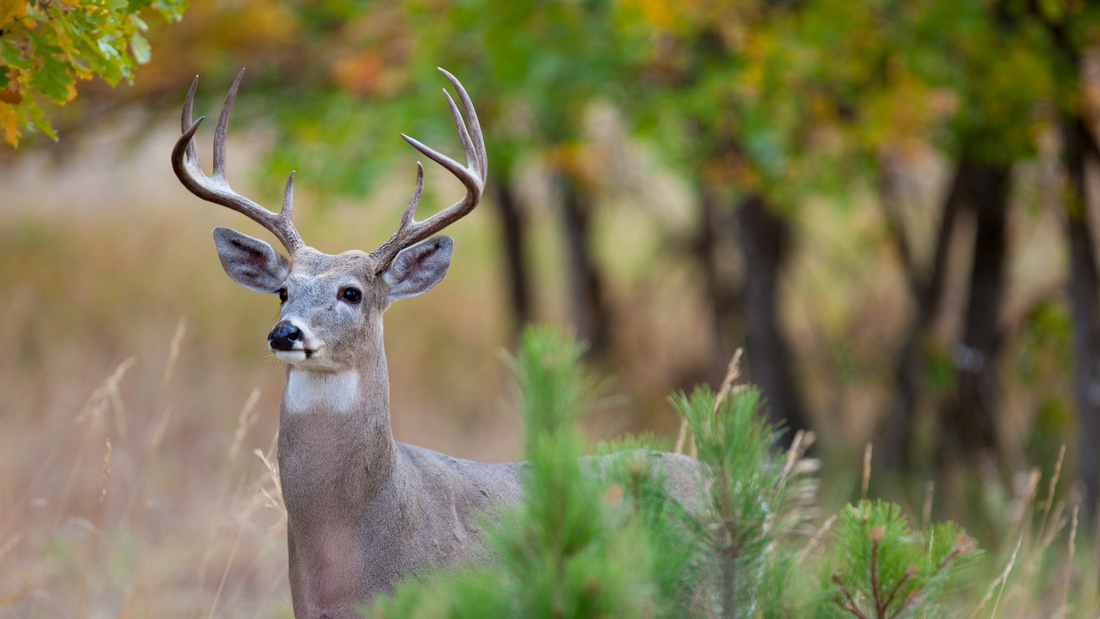How Good Is A Deer's Nose And Sense Of Smell?
How good is a deer’s sense of smell? Deer rely on this sense above all else to survive, so it must be outstanding. Deer hunting often comes down to one thing, beating this keen sense with a rigorous regime of scent control tactics. But how truly strong is a deer's nose? And can it be beat?
Deer rely on their nose for survival, as well as communication. Deer have seven different glandular areas on their body. The interdigital, metatarsal, tarsal, forehead, preorbital, nasal, and preputial glands are all understood to help deer in communication. If you have spent a significant amount of hours deer hunting you have seen some of these glands in use. With so many glands, every bit of deer-to-deer language transferred through rubs, scrapes, and urine needs to be noticed and correctly identified. This in part is why a deer’s sense of smell is so good.
The Olfactory Pathway
When a scent molecule is inhaled through a deer's broad nasal openings, it is captured by little hair-like cellular projections called cilia in the mucous membrane. Once captured, the scent molecules dissolve into and through the mucous and are transferred to the olfactory epithelium. Whitetail epithelium is reported to have 297 million olfactory receptors. (The human epithelium has only 5 million.) These receptors translate the scent signal as electrical impulses up through nerves that extend through the roof of the mouth and into the part of the brain known as the olfactory bulb! A whitetail’s olfactory bulb is about four times larger than that of a human. This means deer have a greater capacity to both detect and transmit scent signals to their brain depending on how the deer's amygdala and the hippocampus process the scent.
Dr. Rose Krupka, a veterinary neurologist, explains these areas of the brain by saying, “The limbic system is the primitive, unconscious part of the brain that has a direct connection to deer behavior, such as maternal instinct, mating, food selection and predator or threat aversion. The hippocampus is involved in instincts, learning and episodic memory retrieval. The amygdala communicates with the hypothalamus, where hormonal processes initiate the ‘fight or flight’ responses to fear or danger.”
Meaning, a deer’s nose is directly connected to the parts of the brain controlling memory, learning and self-preservation reflexes. Therefore, it would stand to reason that with age comes wisdom. A 9-year-old buck isn’t just theorized to be smarter than a yearling. Science says the longer a deer has lived in the wild, as scent experiences compound, the more the deer has learned how to avoid certain scent signatures that signal danger.
Solution
With extremely sensitive defense weapon stacked against a hunter, what can we do? Besides the guaranteed but variable deer hunting tactic of placing oneself downwind of the deer, we are left to scent control. Even with scentless showering, deodorant, toothpaste, clothing detergent, and field spray we will never be able to completely cover up every human or human associated odor from ourselves, clothing, or gear.
Instead we can eliminate or completely change the scent molecule. Ozonics transforms oxygen molecules into ozone molecules and, with a silent fan, projects them downwind out over your scent zone, acting as an effective scent eliminating product. This ozone reacts with many volatile organic compounds commonly produced in nature, resulting in either total destruction or chemical alteration such that these compounds lose their characteristic chemical properties. Destroying or altering the chemical compounds can fool the deer’s sense of smell.
Source: Clint A. McCoy, DVM with North America Whitetail



